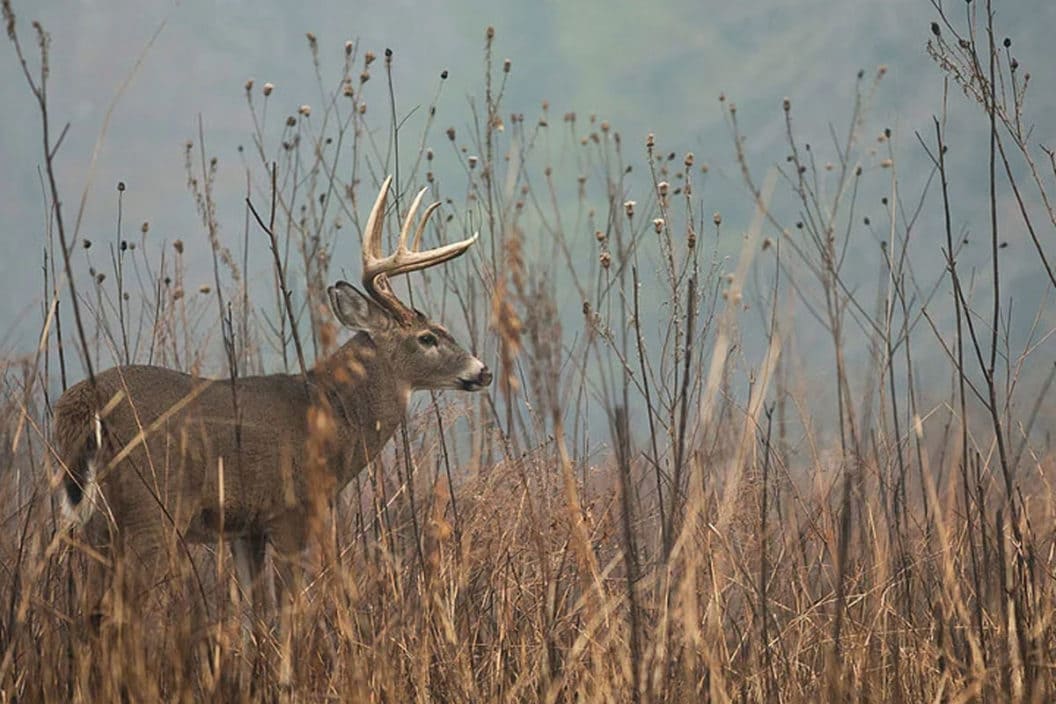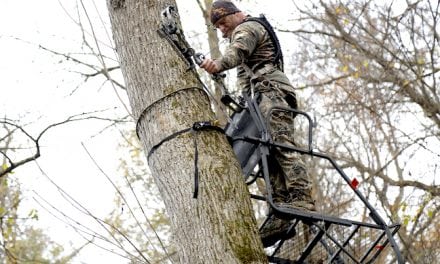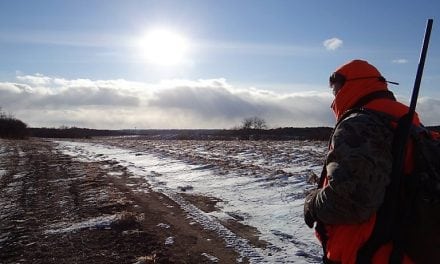
So, you just made the shot on that mature buck you’ve been pursuing all season. Now what? Well, that all depends on a wealth of different factors, which begin with what kind of weapon you chose to hunt with and end with where your shot actually landed. But there are plenty of variables in between that can make or break the success of a deer hunt.
In this piece, we’ll break down several specific blood tracking scenarios, and exactly what you need to do whenever you find yourself under the same circumstances. Keep in mind, the best way to avoid any soul-crushing tacking situations is to practice your shot to the point where you feel like you could do it with your eyes closed. Have your key distances down to a science, learn to control your breathing under any and all pressure, and most importantly, know exactly when and where to shoot. The worst shot typically means the worst tracking.
Heart/Lung Shot
Personally, my favorite shot for whitetail deer is a lung shot, simply because it’s the largest vital area on a deer and provides the most margin for error. I shot a 10-point on opening morning of firearms deer season six years ago that was still the best shot I’ve ever made on a deer. It was a perfect broadside shot from about 40 yards with my 12-gauge that took out both lungs. The buck didn’t even go 30 yards before collapsing.
I didn’t have to follow a blood trail at all, and more importantly, the animal didn’t suffer.
A heart or lung shot will often result in a short-distance recovery with a rifle or shotgun, but of course, that’s not always the case. In 2004, I also made a lung shot on a 7-point with a muzzleloader at 100 yards. To this day, I’m not sure how that young buck managed to run 100 yards before dying. Every situation is unique.
While most firearm-shot deer will die within sight of you on a lung shot, it’s a different story with bowhunting. Most deer shot through the lungs with archery equipment won’t make it far, but they do tend to run a little farther than a deer shot with a gun.
However, if you do make a shot to either the heart or lungs, you’ll likely know right away. The deer typically does a kick before taking off with its tail down. Then when you start following the blood trail, it quickly becomes apparent that your deer is dead just up ahead. In the case of that 7-point, it was like someone ran through the woods with a leaking bucket of paint. There was bright red blood splatter everywhere, and it was filled with telltale air bubbles–the sure sign of a successful lung shot. Near the end, I started finding frothy orange and white foam the wounded deer coughed up as it ran.
If you find blood sign like that, it’s usually safe to follow it up quickly. Odds are, that big buck isn’t going to make it very far!
Liver Shot
My uncle recently shot a great-looking 9-pointer with his crossbow, but hit a few inches back from where he was aiming, and immediately suspected that he hit liver.
A liver hit almost always results in a darker, more watery blood trail. It’s often quite heavy to start, which has given many hunters false hope that their deer wasn’t far ahead until they accidentally walk up on a living buck, spook it and have no time for any kind of practical follow-up shot.
Simply put, if you suspect a liver shot, you likely have a dead deer on your hands, but you’re going to need sit tight until that animal can expire. My uncle actually waited until the next morning, which paid off as he found the deer not too far from where he’d shot. However, liver shots tend to stop bleeding or show sporadic blood after some time, making tracking much more difficult.
If you’re having a hard time locating your animal after giving it plenty of time to expire, you may need to call in professional deer trackers with dogs (if it’s legal in your state or province). Sometimes these dogs are the difference between a lost deer and venison in the freezer.
Gut Shot
I’ve seen a lot of disparaging remarks on the Internet (especially in hunting videos) about hunters who gut shot a deer. But look, it unfortunately just happens sometimes. It can happen to any one of us, and no hunter wants to shoot a deer in the guts.
Maybe the deer was at a sharper angle from the treestand than you realized or a sneaky tree limb barely deflected the arrow. Maybe buck fever and the antlers got the best of you. That’s deer hunting. You’ll probably notice if you hit a deer too far back and low. A deer hit in the guts will often hunch up immediately. Another tell-tale sign you’ve hit the guts are some ugly brown or yellow colors mixed with the blood. You may even find bits of undigested food that smell horrible. All of these are unfortunate indicators of a gut shot.
The absolute best thing to do in this scenario is to back off. A deer shot in the stomach can run for miles if it’s pursued right away. A gut shot can kill a deer, but you’re going to have to be patient–you need to wait at least six hours, but ideally closer to eight–before starting to track. The only real exception would be if rain or snow threatened your blood trail, in which case you should proceed with extreme caution.
However, even if conditions are perfect, gut shot sign sometimes runs out completely when the deer decides to backtrack, a reality especially true for many bowhunters.
Before you go tromping through every bedding area and down every logging road looking for fresh tracks, it might be worth it to again consider calling in a tracking dog. Thankfully, these services are becoming more and more common throughout the country and they may be the difference between a recovery and a lost deer.
For more outdoor content from Travis Smola, be sure to follow him on Twitter and check out his Geocaching and Outdoors with Travis YouTube channels.
READ MORE: HOW TO RUIN A DEER HUNTING SPOT
The post 3 Deer Tracking Scenarios, How to Approach Them appeared first on Wide Open Spaces.















